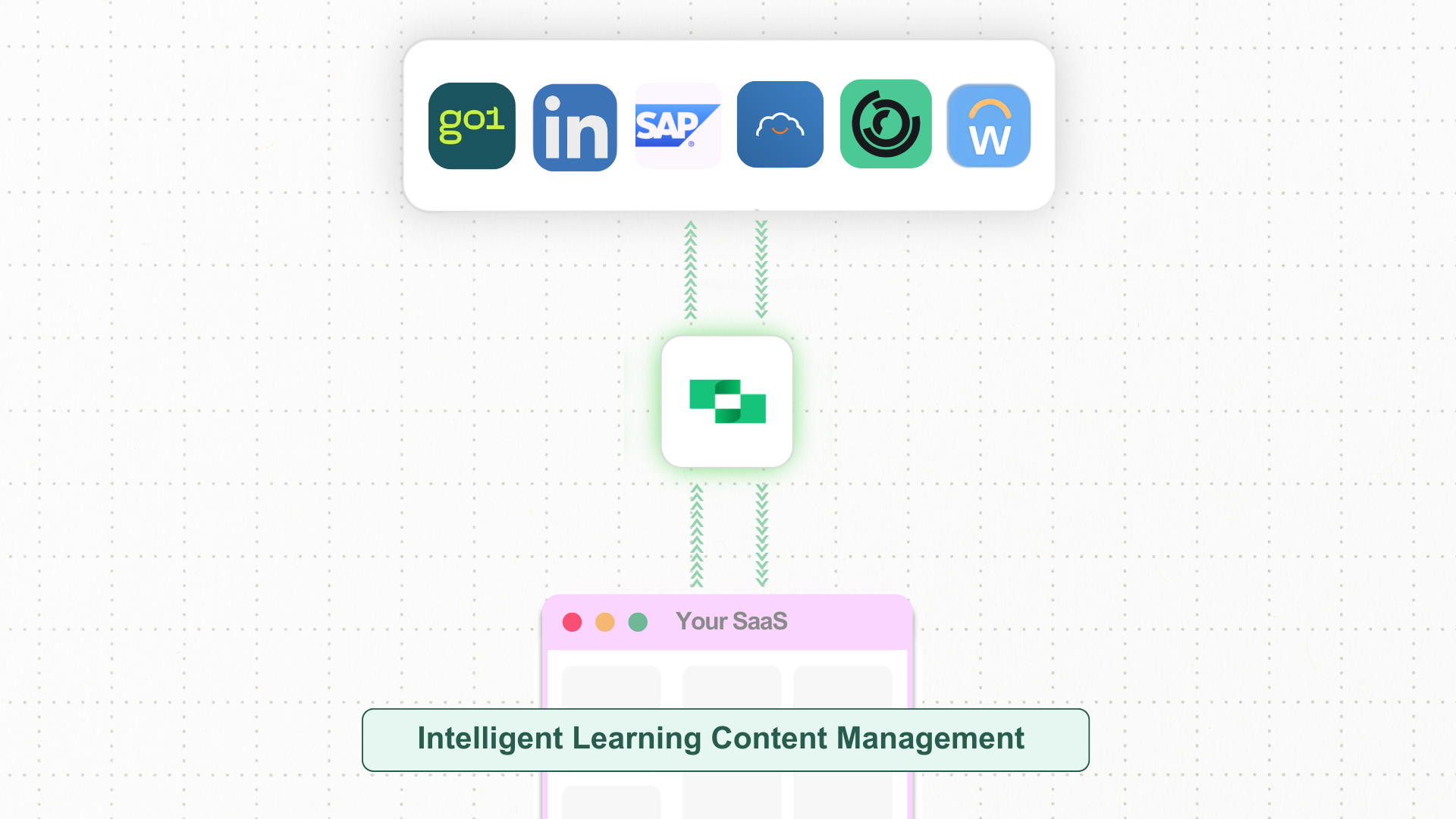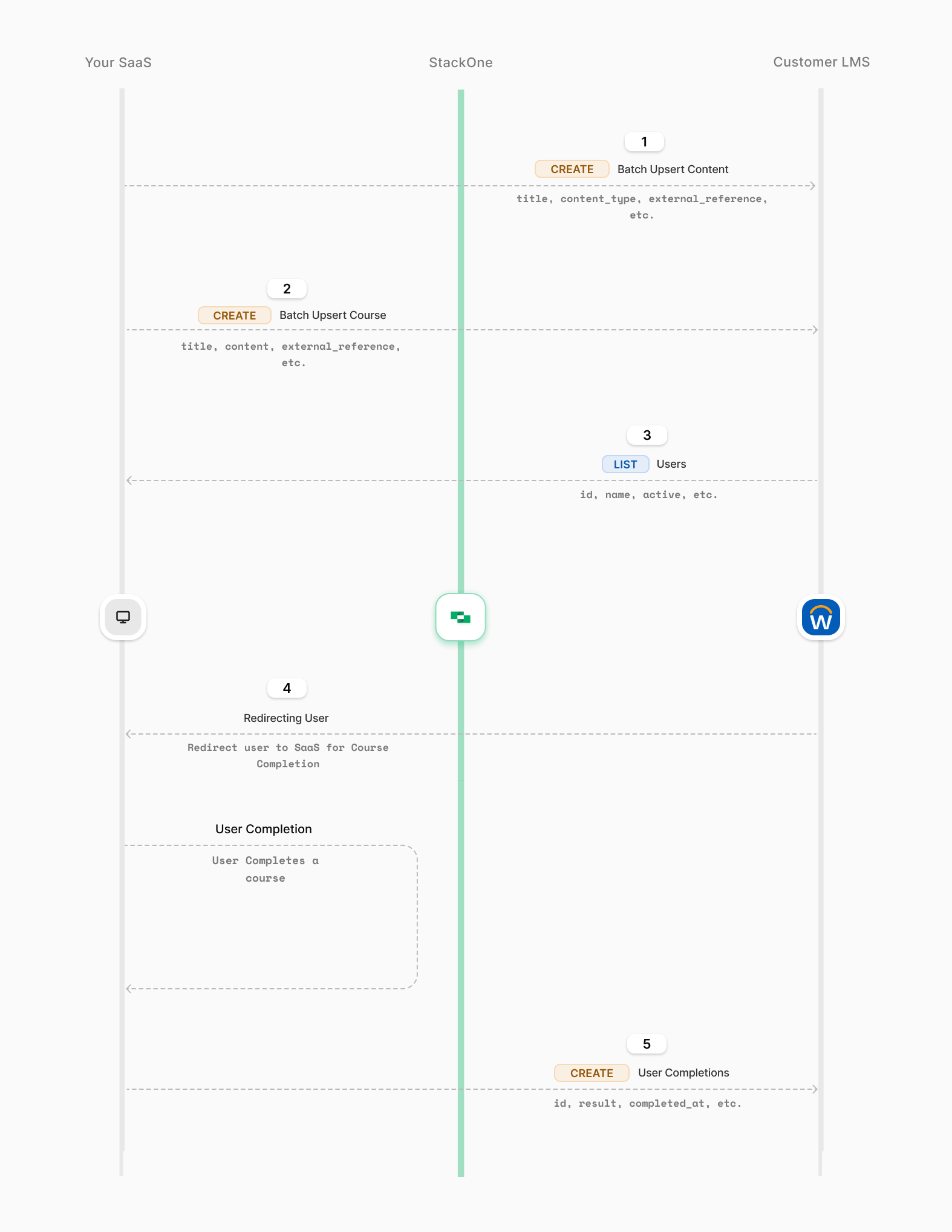
StackOne simplifies all of this by offering:
Intelligent Learning Content Management for Your Platform: Key Steps and System Interactions
Integrating intelligent learning content management into your SaaS platform allows you to automate course updates, track user progress in real-time, and maintain seamless learning experiences for your users.Steps for Enabling Intelligent Learning Content Sync and Completion Tracking
Below are the steps to set up intelligent learning content management and completion tracking, helping you efficiently manage course content, sync completion data, and enhance user engagement on your platform.1
Set Up the LMS Connection and Sync Content
After setting up the account, you can make the same unified requests to all LMS providers, using the
x-account-id to differentiate between them.You can use the batch endpoint to push the entire catalogue leaving StackOne to handle rate-limits, batch size and underlying LMS behaviour.In addition, you can use the external_reference, an identifier determined by you, to identify the content in the LMS removing the need to store and maintain ids.- API Endpoint: POST lms/content/batch
2
Select and Push Specific Content
You can use the same endpoint to sync and manage content updates, and you can use the
external_reference to identify the content in the LMS.- API Endpoint: POST lms/content/batch
3
Sync Users from LMS
EitherAllow admins to retrieve a list of all users from the LMS provider, including details like
id, name, email_address, external_reference, etc.We provide as many identifier fields as possible to ensure you are able to match users across platforms.- API Endpoint: GET /lms/users
4
Enable Manual Content Re-Sync
Sometimes, admins may need to update content to selected LMS providers from the dashboard. Enable a manual re-sync button in the admin interface so they can refresh and update the content whenever needed.
5
Sync Course Completions for Tracking
You can track user progress through content and fire a completion event once the user has consumed the content, using the end user’s
id and learning_object_external_reference, along with details like result and completed_at.This allows you to manage the completions without storing content data in a set and foget fashion.- API Endpoint: POST /lms/users/{id}/completions


